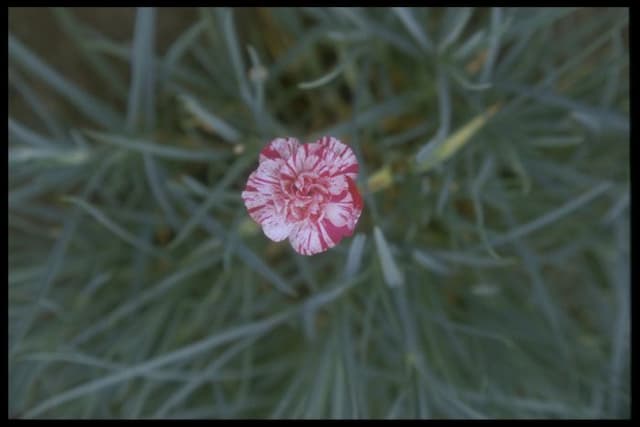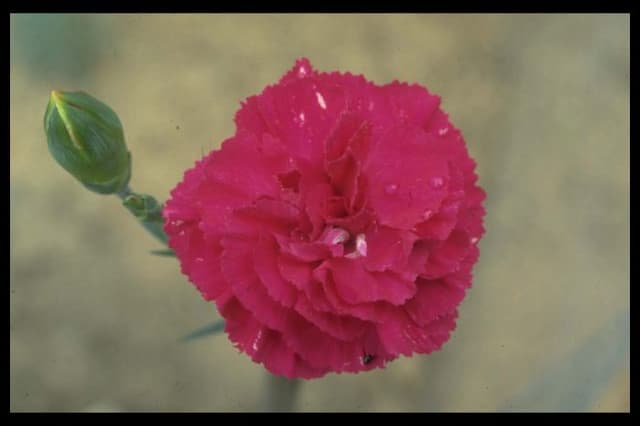Soapwort Saponaria officinalis

ABOUT
The plant commonly known as soapwort boasts a lush green appearance with ovate to lance-shaped leaves that are pointed at both ends, and they attach to the stem with no stalk, clasping it firmly. The foliage arrangement gives the plant a full and bushy look. During blooming season, soapwort produces clusters of pretty, five-petaled flowers. These flowers can range in color from white to pink, and they exhibit a delicate, sometimes blushed appearance, often with a light fragrance that adds to their charm. The petals have a slight notch at the tip, which gives them a distinctive look compared to other flat-petaled flowers. Overall, soapwort has a classic wildflower aesthetic that can be appreciated in many garden settings or natural landscapes.
About this plant
 Names
NamesFamily
Caryophyllaceae.
Synonyms
Soapwort, Bouncing Bet, Crow Soap, Wild Sweet William, Soapweed, Fuller's Herb, Lady's-washbowl, Old-maid's-pink, Sweet Betty, Hedge Pink, Bruisewort, Latherwort.
Common names
Bootia saponaria (L.) Hill, Lychnis saponaria (L.) Scop., Silene saponaria (L.) W.T. Aiton, Saponaria haussknechtii Boiss, Saponaria lutea L., Saponaria officinalis var. glabra Corb., Saponaria vulgaris Neck.
 Toxicity
ToxicityTo humans
Saponaria officinalis, commonly known as soapwort, contains saponins, which are toxic when ingested in large amounts. Saponins are natural detergents that can cause poisoning if enough of the plant is eaten. The symptoms of soapwort poisoning can include nausea, vomiting, diarrhea, and sometimes abdominal pain. In severe cases, the saponins can damage red blood cells and cause hemolysis or disrupt normal heart function. However, serious poisoning from soapwort is rare since a significant amount of the plant material must be consumed to produce toxic effects.
To pets
Soapwort (Saponaria officinalis) also poses a risk to pets due to its saponin content. If pets ingest parts of the plant, they can experience symptoms similar to those in humans, such as vomiting, diarrhea, and abdominal pain. Depending on the amount ingested, these symptoms could be mild to severe. As with humans, significant ingestion is usually required for severe toxicity, but pet owners should prevent their animals from consuming soapwort and seek veterinary care if accidental ingestion is suspected.
 Characteristics
CharacteristicsLife cycle
Perennials
Foliage type
Deciduous
Color of leaves
Green
Flower color
Pink
Height
1-2 feet (30-60 cm)
Spread
1-2 feet (30-60 cm)
Plant type
Herb
Hardiness zones
3-9
Native area
Europe
Benefits
 General Benefits
General Benefits- Ornamental Value: Saponaria officinalis, commonly known as soapwort, is often used for its delicate flowers and ability to form dense and attractive ground covers in gardens.
- Soapy Properties: The roots and leaves of soapwort can be used as a gentle soap substitute due to the presence of saponins, which lather when mixed with water.
- Pollinator Attraction: Soapwort flowers attract beneficial insects, such as bees and butterflies, which are important for pollination of garden plants and crops.
- Erosion Control: The robust and spreading nature of soapwort makes it an effective plant for stabilizing soil and preventing erosion on slopes or in areas prone to soil degradation.
- Cultural History: Soapwort has a long history of use in traditional crafts and activities, such as the gentle cleaning of delicate textiles and historical garments.
 Medical Properties
Medical Properties- Expectorant: Saponaria officinalis has been traditionally used to help loosen phlegm and treat coughs.
- Diuretic: It may promote the production of urine, helping with the removal of waste from the body.
- Emollient: The plant is known for its soothing effect on the skin, potentially aiding with skin irritations and conditions.
- Antirheumatic: There is historical use of the plant in treating rheumatic pain.
- Anti-inflammatory: Saponaria officinalis has been used for its potential to reduce inflammation.
 Air-purifying Qualities
Air-purifying QualitiesThis plant is not specifically known for air purifying qualities.
 Other Uses
Other Uses- Saponaria officinalis, commonly known as soapwort, can be used to make a gentle soap or shampoo due to its natural saponin content which creates a lathering effect when agitated in water.
- The roots and leaves of soapwort can be boiled to create a liquid solution that effectively cleans delicate fabrics, such as silk and wool, without causing damage.
- Soapwort extracts are sometimes used in bubble-bath solutions and foaming cleansers because of their natural frothing quality.
- Gardeners use soapwort as a companion plant to attract beneficial insects such as bees and butterflies, helping to pollinate the surrounding plant life.
- Soapwort has been traditionally used as a cleaning agent for antique textiles, including tapestries and embroidered works, due to its mild action.
- The plant is sometimes included in natural dyeing processes, where it not only cleans the fibers but also can be used to modify the pH of the dye bath for certain dye stuffs.
- Fishermen have historically used soapwort as a cleaning agent for cleaning their nets, as it is gentle on the fibers and biodegradable in the aquatic environment.
- In crafting homemade toothpaste, the natural foaming property of soapwort is valued for creating a paste with a pleasant texture.
- Some natural cosmetic formulations incorporate soapwort extract as an emulsifier to blend oil and water-based ingredients seamlessly.
- Soapwort has been used in the preparation of organic sprays to protect plants from pests, with its saponins having a secondary repellent effect on certain garden insects.
Interesting Facts
 Feng Shui
Feng ShuiThe plant Soapwort is not used in Feng Shui practice.
 Zodiac Sign Compitability
Zodiac Sign CompitabilityThe plant Soapwort is not used in astrology practice.
 Plant Symbolism
Plant Symbolism- Purity: The common name for Saponaria officinalis is "soapwort," which comes from its ability to form a lather in water and historically being used for cleaning purposes, symbolizing the cleansing of impurities.
- Innocence: As a plant that has been used for cleaning, it also carries the connotation of innocence, untouched by grime or moral wrongdoing.
- Everlasting love: Soapwort's resilient nature and ability to spread and thrive might be seen as a symbol of enduring affection.
- Protection: In folk traditions, soapwort was thought to have protective qualities, possibly because of its use in cleansing and therefore safeguarding against illness.
 Water
WaterSoapwort prefers moist but well-drained soil. It is important not to overwater, as this can lead to root rot. Provide about 1 inch of water per week, either through rainfall or manual watering. During hot, dry spells, check the soil moisture often and water when the top inch of the soil feels dry to the touch. For potted soapwort, water until excess water runs out of the drainage holes, ensuring the soil is evenly moist.
 Light
LightSoapwort thrives best in full sun to partial shade. It should be placed in a location where it receives at least 6 hours of sunlight per day. The ideal spot for soapwort would be one that enjoys morning sun and is perhaps lightly shaded during the intense afternoon heat, especially in hotter climates.
 Temperature
TemperatureSoapwort is a hardy perennial and can tolerate a temperature range from about -30°F to 90°F. However, it grows optimally at temperatures between 60°F and 75°F. Providing mulching can help to protect the roots during extreme winter cold or summer heat.
 Pruning
PruningSoapwort benefits from pruning to encourage bushier growth and more flowers. Deadhead spent blooms regularly to promote continued blooming. Prune back by about one-third after flowering has completed to maintain shape and health of the plant. The best time for pruning soapwort is in late winter or early spring, just before new growth starts.
 Cleaning
CleaningAs needed
 Soil
SoilBouncing Bet prefers well-drained soil with a pH ranging from 6.0 to 8.0. A mix of garden soil, compost, and sand or perlite is ideal for promoting good drainage and providing appropriate nutrients.
 Repotting
RepottingBouncing Bet does not require frequent repotting; it can be repotted every 2 to 3 years or as needed when it outgrows its container.
 Humidity & Misting
Humidity & MistingBouncing Bet is tolerant of a wide range of humidity levels and does not have specific humidity requirements, making it adaptable to most climates.
 Suitable locations
Suitable locationsIndoor
Ensure bright light, pot in well-draining soil, and avoid overwatering Bouncing Bet.
Outdoor
Plant in sun to part shade, well-drained soil, and water moderately.
Hardiness zone
3-9 USDA
 Life cycle
Life cycleSoapwort, Saponaria officinalis, commences its life cycle as a seed, typically germinating in early spring when soil temperatures and moisture levels become conducive to sprouting. The seedling stage is marked by the emergence of primary leaves, and as the plant grows, it develops a strong root system and true leaves characteristic of the adult plant. Vegetative growth continues throughout the spring and summer, with the plant forming a basal rosette of leaves and stems. By late summer to early fall, soapwort progresses to the flowering stage, producing clusters of pink to white flowers that are pollinated by insects, leading to seed formation. Seeds are then dispersed by various means, including wind, water, and animal movement, to complete the cycle. Soapwort is a perennial plant, allowing it to survive the winter and regrow from its root system in subsequent years, repeating this cycle.
 Propogation
PropogationPropogation time
Spring-Early Summer
Propogation: Saponaria officinalis, commonly known as soapwort, is typically propagated in the spring or early summer. The most popular method of propagation for soapwort is by dividing its root clumps. Gardeners dig up the plant after it has finished flowering, carefully separating the root ball into smaller sections with at least one growing shoot each. These divisions are then planted in the ground at the same soil level as they were previously, spaced about 12 inches (approximately 30 centimeters) apart to allow for growth. The plants should be kept well-watered until they are established, which usually takes a few weeks. This method is favored for its simplicity and high success rate, making it accessible for gardeners of all skill levels.




![Pink [Coconut Sundae]](/_next/image?url=https%3A%2F%2Fplants-admin.emdemapps.com%2Fimages%2Fplants%2F%2Fimages%2F604b5d09d4fd1.png&w=640&q=75)




